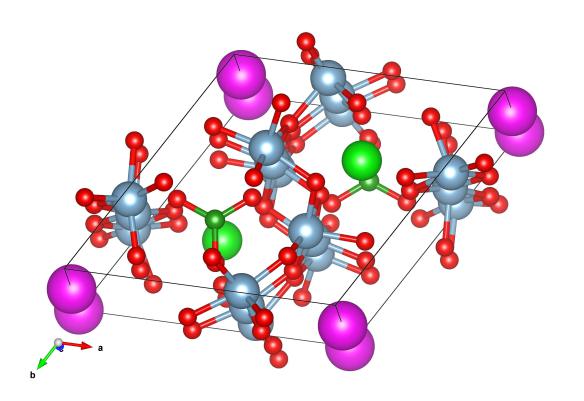A formerly very exclusive mineral – Painite
What does it look like?

The crystal structure of Painite. Here the calcium atoms are purple, aluminium are light blue, green for zircon and dark green for boron with the red atoms representing oxygen. Image generated by the VESTA (Visualisation for Electronic and STructural Analysis) software http://jp-minerals.org/vesta/en/
What is it?
Painite, named after British mineralogist Arthur Pain, was once considered to be the rarest mineral in the world. It's a borate (BO3) mineral and when first identified only 25 specimens of this deep red mineral were known about – all from Myanmar. Of these, only two were faceted gems, which had a beautiful deep red colour (which is from the small amount of the elements vanadium and chromium that substitute into the crystal structure). However, in 2002, a new source of this mineral was found, with nearly a thousand fragments of the mineral discovered.
Where did the structure come from?
The structure of Painite we've featured here was revealed by Moore and Araki, in 1976, from a specimen kept in the British Museum.






